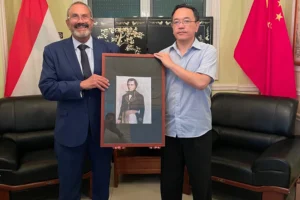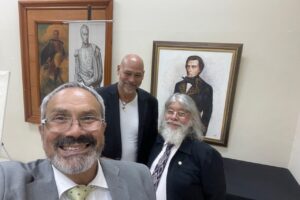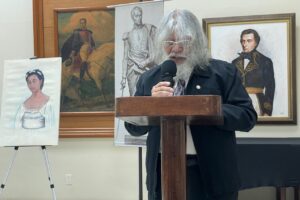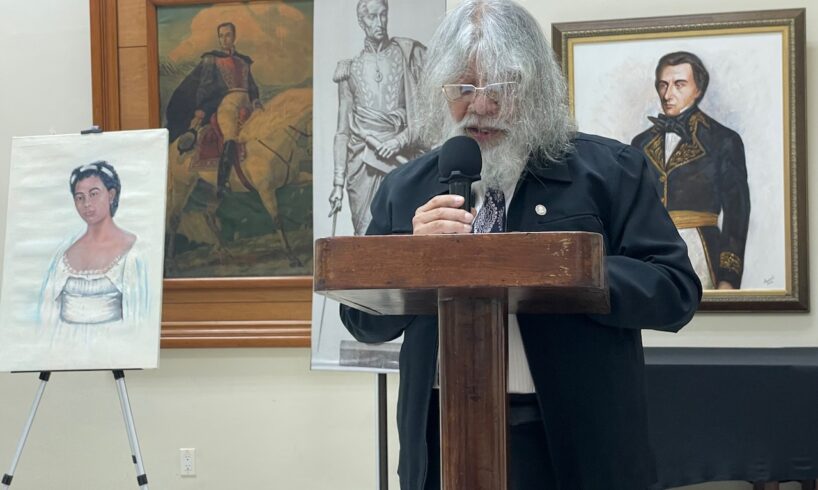
Curaçao, February 12, 2025 – A significant chapter in the ongoing recognition of María Isabel Gómez, the mother of General Manuel Piar, was written today as artist Norberto Liendo formally presented his 2016 painting of her at the Sociedad Bolivariana in Curaçao. The unveiling, held on the historic 12th of February, marked a moment of profound historical and cultural importance, bringing long-overdue attention to a woman who played a crucial but often overlooked role in the struggle for Latin American independence.
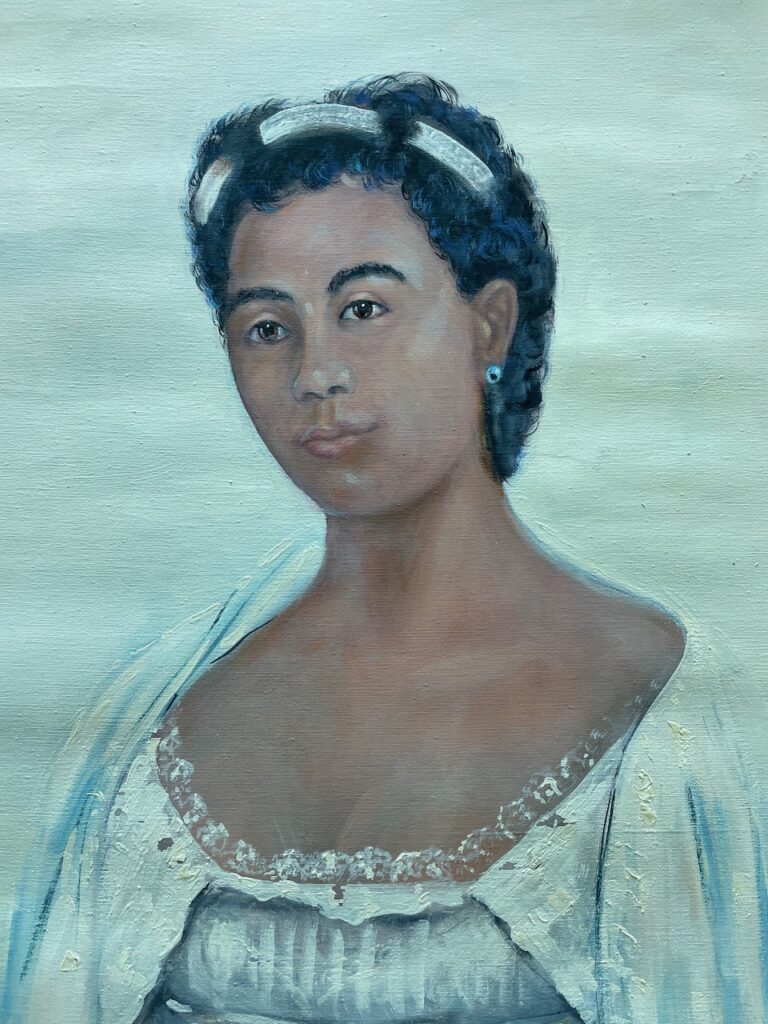 The painting, measuring 86×56 cm, was officially revealed by Néstor Ramos, President of the Sociedad Bolivariana, alongside the Vice Consul of the Bolivarian Republic of Venezuela, Irene NG Chan and two direct descendants of Manuel Piar residing in Curaçao, Edna Carlo and Keith Carlo. As the cloth fell, revealing Liendo’s detailed and evocative depiction of María Isabel Gómez, the room was filled with a sense of reverence and recognition for a historical figure who, for too long, had remained in the shadows of history.
The painting, measuring 86×56 cm, was officially revealed by Néstor Ramos, President of the Sociedad Bolivariana, alongside the Vice Consul of the Bolivarian Republic of Venezuela, Irene NG Chan and two direct descendants of Manuel Piar residing in Curaçao, Edna Carlo and Keith Carlo. As the cloth fell, revealing Liendo’s detailed and evocative depiction of María Isabel Gómez, the room was filled with a sense of reverence and recognition for a historical figure who, for too long, had remained in the shadows of history.Why This Unveiling Mattered
This event was more than just the presentation of a painting—it was an act of historical justice. María Isabel Gómez, a Curaçaoan midwife and activist of African descent, has often been overshadowed in narratives about the independence of Venezuela. While her son, General Manuel Piar, is remembered as one of the great military leaders of the revolution, her own sacrifices and struggles have largely been erased from mainstream accounts.
•Recognizing an Overlooked Heroine:
The painting serves as a powerful visual tribute to a woman who not only raised a revolutionary leader but actively participated in the independence movement herself. Historical records suggest that she assisted in the creation of Venezuela’s first revolutionary flag in 1797, was imprisoned and exiled for her involvement in early independence conspiracies, and later petitioned Simón Bolívar for support following her son’s execution in 1817.
•A Moment of Cultural Reclamation:
By displaying this artwork in the Sociedad Bolivariana de Curaçao, an institution dedicated to preserving and promoting Bolívar’s ideals, the event also symbolized the reconnection of Curaçao with its overlooked role in Latin American history. Manuel Piar’s ties to the island are well known, but the recognition of María Isabel Gómez as a Curaçaoan figure of resistance further strengthens the island’s historical link to the independence movement.
•Representation of Afro-Caribbean Women in History:
The unveiling of this painting is also a step forward in acknowledging the contributions of Afro-Caribbean women to Latin American history. Women like María Isabel Gómez were not mere spectators of history; they actively participated, resisted, and sacrificed for the cause of liberation, despite the deep-seated racial and gender biases of their time.
The Artist’s Vision: Norberto Liendo’s Work
Following the unveiling, guests had the opportunity to meet the painter, Norberto Liendo, and discuss his artistic vision. His 2016 work, now formally presented in 2025, captures María Isabel Gómez in a dignified and powerful pose, dressed in a garment gifted by Josefa Joaquina Sánchez, a fellow revolutionary and flag maker. The details in Liendo’s brushstrokes emphasize both her strength and her sorrow, reflecting the resilience of a woman who endured exile, loss, and marginalization while remaining steadfast in her convictions.
Attendees also had the opportunity to take photographs in front of the painting, making it a moment of personal connection with a piece of history that has been largely ignored in traditional narratives.
A Historic Step Toward Recognition
The event at the Sociedad Bolivariana was a testament to the growing recognition of marginalized figures in Latin American history. By bringing María Isabel Gómez to the forefront, Curaçao has taken a step in acknowledging its role in the independence struggle and giving rightful credit to those who fought, not with swords, but with determination, sacrifice, and silent resistance.
This unveiling is not just about a painting—it’s about a legacy being restored. It is a reminder that history is not static, and that voices once silenced can still find their way back into the collective memory. The presence of Manuel Piar’s descendants at the event made this acknowledgment even more meaningful, symbolizing a long-awaited recognition of their ancestor’s mother—a woman whose strength and resilience shaped the course of history.
As the painting now stands on display, it serves as both a work of art and a historical statement: María Isabel Gómez is no longer a forgotten footnote in the story of Latin American independence—she is a central figure in its unfolding narrative.
A Movement That Started in November 2024
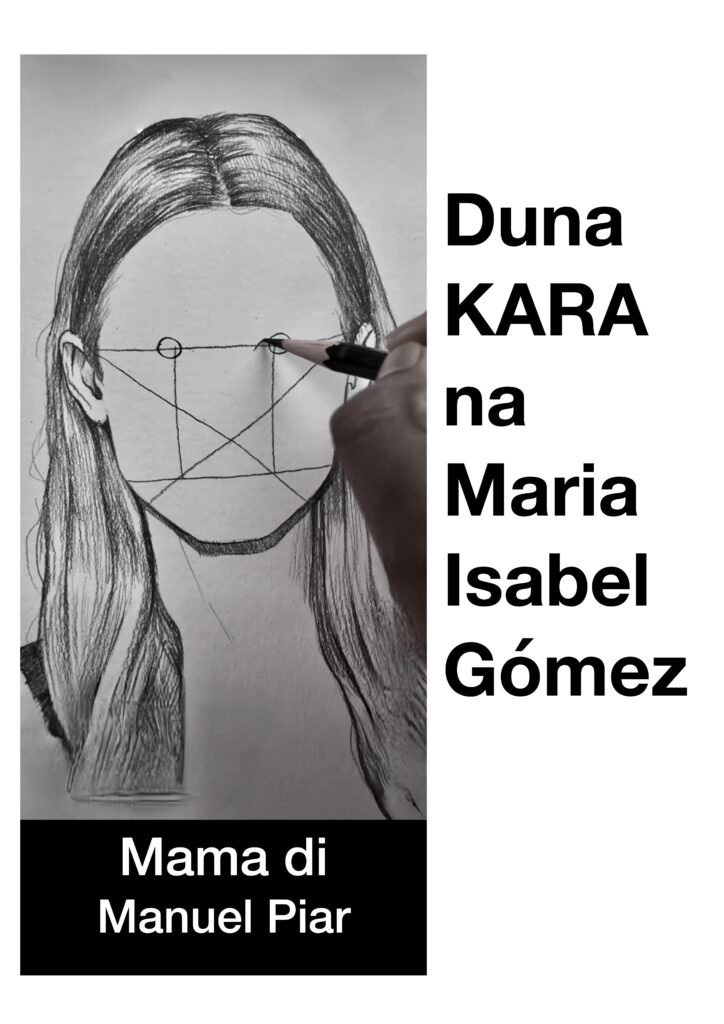
This historic moment did not happen in isolation—it was the culmination of a growing movement that began in November 2024, when Tico Vos, through his project Duna Klara pa María Isabel Gómez, successfully brought María Isabel Gómez onto the national and international agenda.
With a series of Otrobanda events, artistic exhibitions, and in-depth storytelling, Tico Vos ensured that María Isabel Gómez was not just recognized as a historical figure, but that her narrative was amplified in modern cultural discussions. He also facilitated the placement of a series of significant articles on the website www.manuelcarlospiar.com, ensuring that her story reached a broader audience beyond Curaçao.
The momentum built by this initiative sparked increased interest in 2025, leading more painters, historians, and cultural activists to join the cause. The unveiling of Norberto Liendo’s painting at the Sociedad Bolivariana became a symbolic culmination of this growing movement, proving that art, history, and advocacy can work together to restore forgotten legacies.
This is not just the recognition of one woman—it is the beginning of a larger cultural shift toward honoring the invisible heroines of Latin American and Caribbean history.
Tico Vos
www.manuelcarlospiar.com
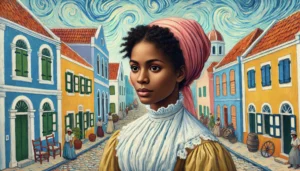
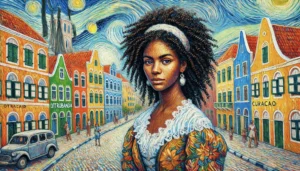
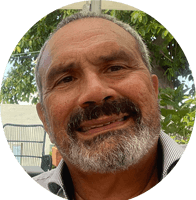
Tico Vos is a professional photographer, producer, and tourism specialist. He has been documenting the History, Culture, and News of Curaçao. This site is a documentation of the history of Manuel Carlos Piar.

